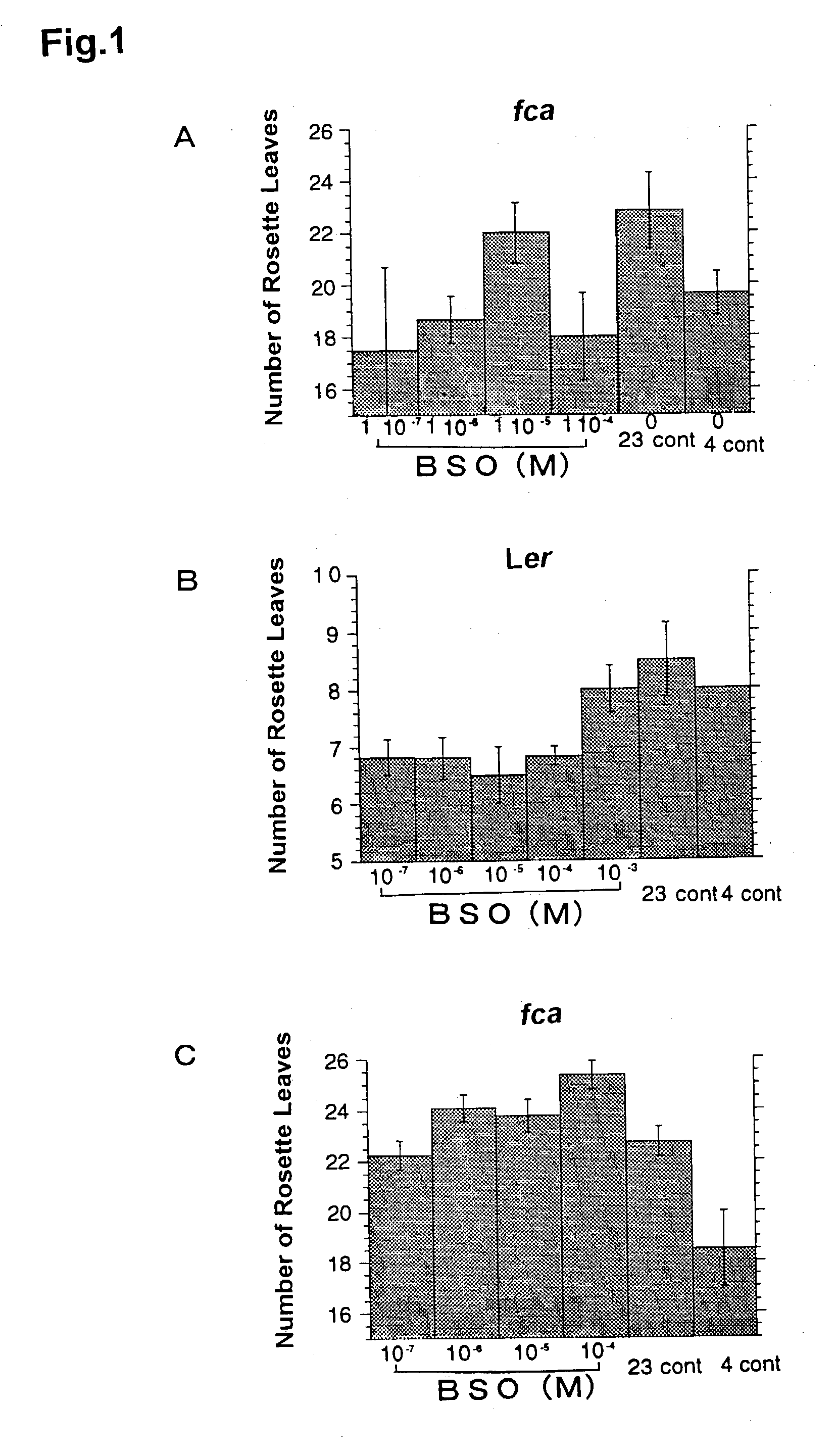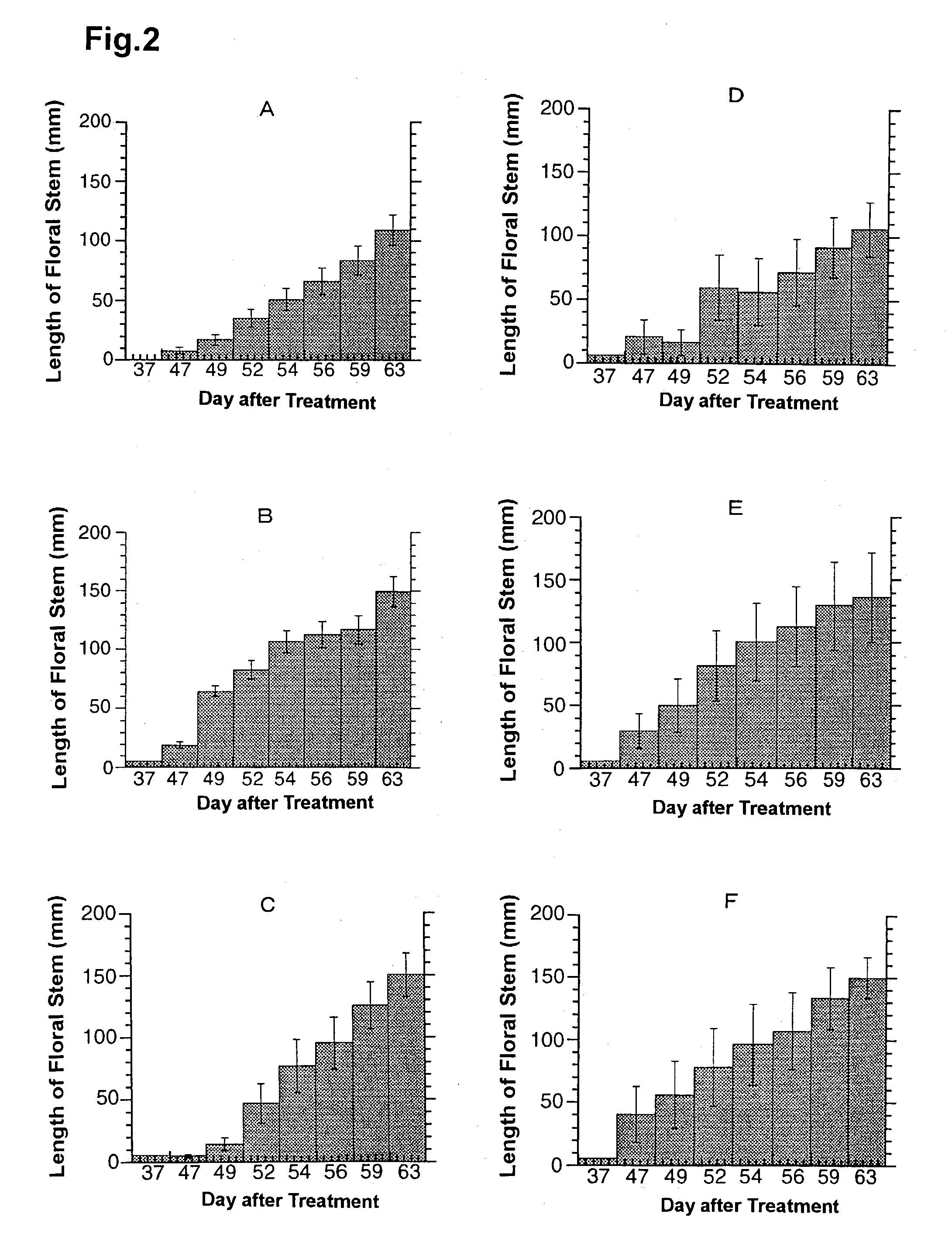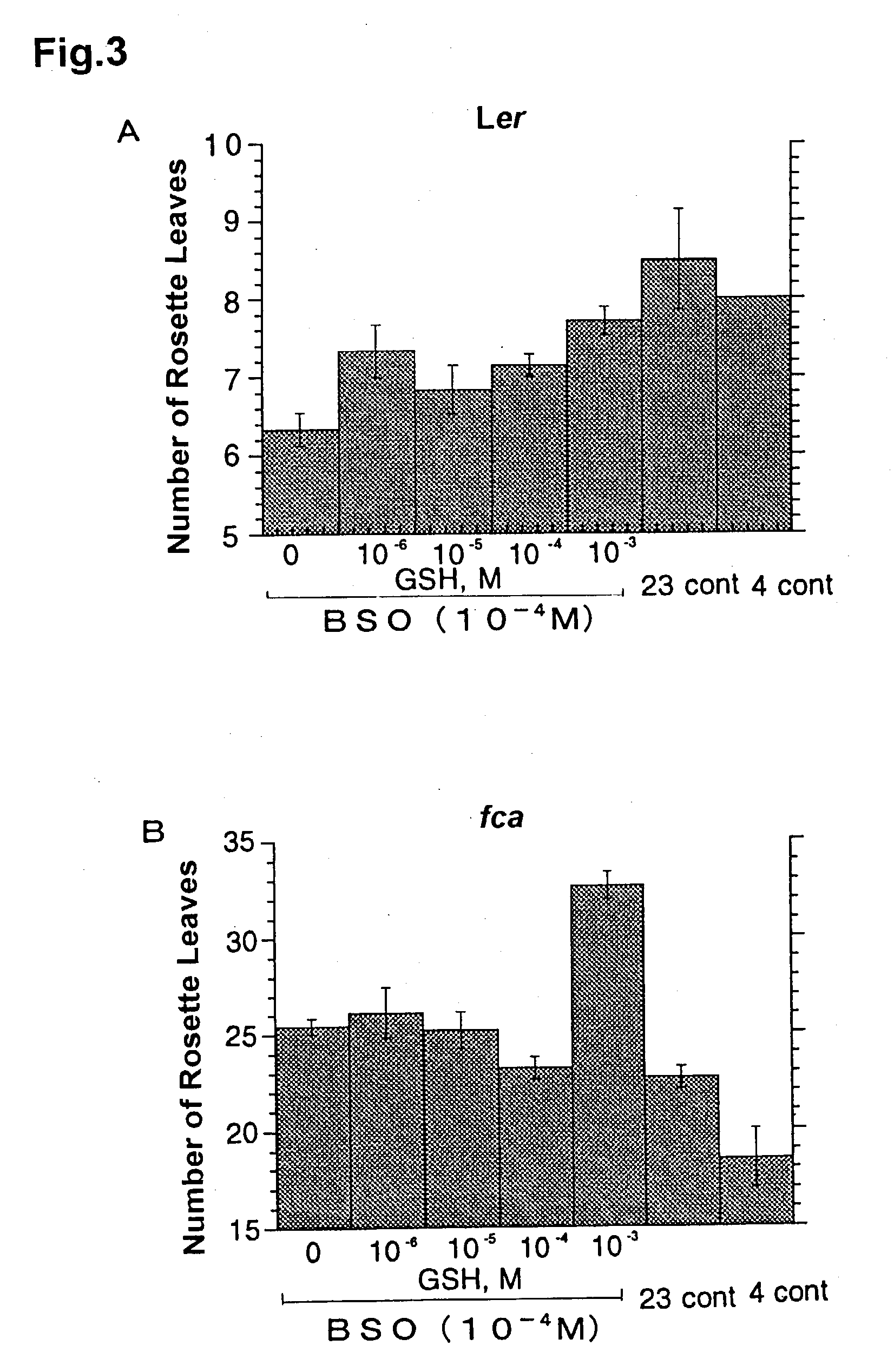Cell-or organ-differentiation controllers and method of controlling morphogenesis by using the same
a cell-or-organ technology, applied in the field of cell-or-organ differentiation controllers and the method of controlling morphogenesis by using the same, to achieve the effect of examining the elongation of floral stems
- Summary
- Abstract
- Description
- Claims
- Application Information
AI Technical Summary
Benefits of technology
Problems solved by technology
Method used
Image
Examples
example 2
Regulation of Flowering Time (2)
[0066] Arabidopsis thaliana late-flowering mutant fca was grown in a manner similar to that described in Example 1 at 23.degree. C. under the day length condition of 16-h light / 8-h dark cycle at 100 .mu.E / m.sup.2 / s light intensity and used in the experiments.
[0067] As a redox-state regulator of cells, hydrogen peroxide was used at the concentrations indicated in FIG. 4. An aqueous solution of hydrogen peroxide was prepared immediately before use. Two to three plants were placed per a pot (about 40.times.50 mm). On 17 days after imbibition and thereafter, the treatment solution was added dropwise around the shoot apex at 5 ml / day per a pot. The treatments were performed on day 0 (the initiation date of treatment), 1, 3, 5 and 7, which set of treatments was regarded as one processing. The time of floral transition was compared using the rosette leaf number as an index. The results are shown in FIG. 4. In the figure, the 23 cont is the result of water tr...
example 3
Regulation of Flowering Time (3)
[0070] Arabidopsis thaliana late-flowering mutant fca was grown in a manner similar to that described in Example 1 at 23.degree. C. under a day length condition of 16-h light / 8-h dark cycle at 100 .mu.E / m.sup.2 light intensity and used in the experiments.
[0071] As a redox-state regulator of cells, KCN or NaN.sub.3 was used. KCN or sodium azide was prepared immediately before use and used at concentrations described in FIGS. 6 or 7, respectively. Two to three plants were placed per a pot (about 40.times.50 mm) and treatment solution was added dropwise around the shoot apex at 5 ml / day per a pot. KCN or NaN.sub.3 treatment was started 17 days after imbibition. The treatments were performed on day 0 (the initiation date of treatment), 1, 3, 5 and 7, which set of treatments was regarded as one processing. The time of floral transition was compared using the rosette leaf number as an index. The experimental results with KCN or NaN.sub.3 are shown in FIG. 6...
example 4
Regulation of Development at Germination (1)
[0074] Soft papers were laid in plastic dishes (100.times.15 mm), and seeded with Triticum aesivum L. (cv. Shirasagi) or Oryza sativa L. (cv. Nipponbare) (15 seeds / dish). To the dish was added an aqueous solution of hydrogen peroxide up to 15 ml, and allowed to germinate (light condition, 50 .mu.E / m.sup.2, 16-h light / 8-h dark cycle; temperature, Triticum aesivum L.: 18.degree. C., Oryza sativa L.: 27.degree. C.). Aqueous solutions each containing hydrogen peroxide at the concentrations indicated in FIG. 8 were prepared immediately before use then applied to the seeds. The length of coleoptile of Triticum aesivum L. treated with hydrogen peroxide at each concentration was measured at 144 hours (6 days) after imbibition. The results are shown in FIG. 8. In the figure, the values are expressed as mean.+-.standard error.
[0075] FIG. 8 shows that the cells were elongated in the plants treated with hydrogen peroxide.
[0076] The above results indic...
PUM
| Property | Measurement | Unit |
|---|---|---|
| concentration | aaaaa | aaaaa |
| temperature | aaaaa | aaaaa |
| flowering time | aaaaa | aaaaa |
Abstract
Description
Claims
Application Information
 Login to View More
Login to View More - R&D
- Intellectual Property
- Life Sciences
- Materials
- Tech Scout
- Unparalleled Data Quality
- Higher Quality Content
- 60% Fewer Hallucinations
Browse by: Latest US Patents, China's latest patents, Technical Efficacy Thesaurus, Application Domain, Technology Topic, Popular Technical Reports.
© 2025 PatSnap. All rights reserved.Legal|Privacy policy|Modern Slavery Act Transparency Statement|Sitemap|About US| Contact US: help@patsnap.com



